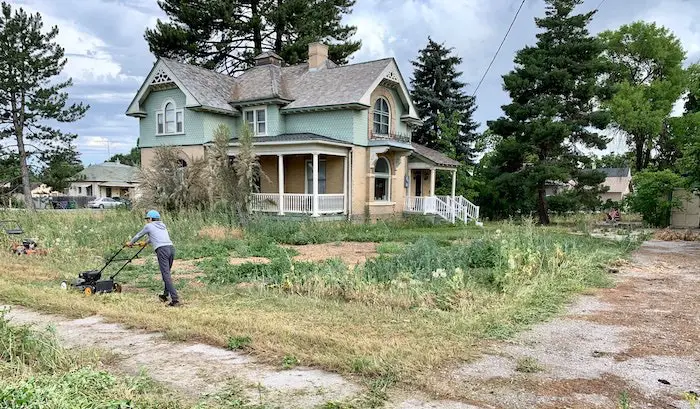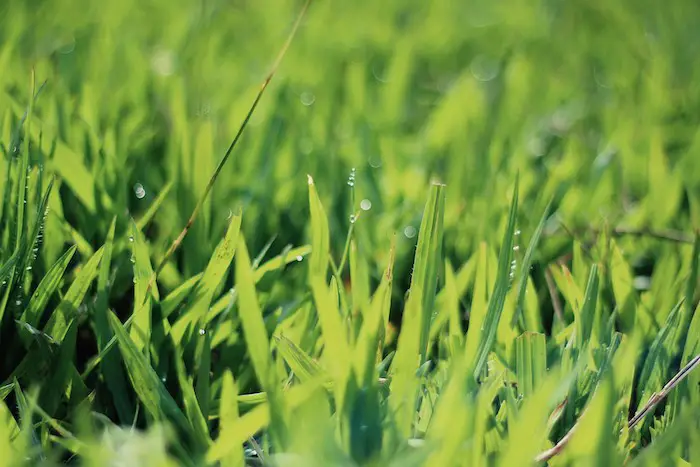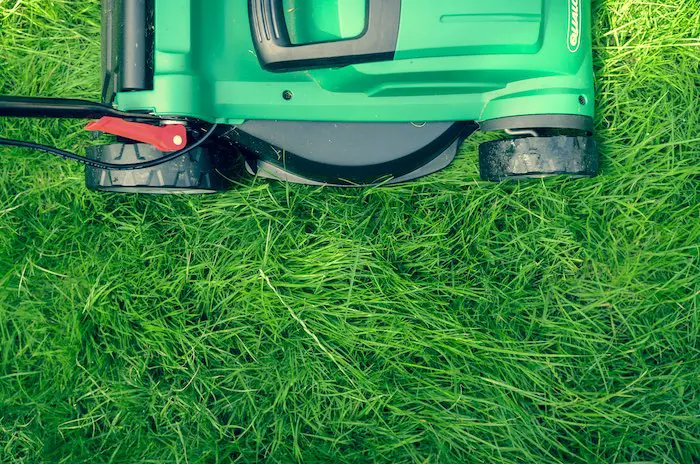You have probably been told not to mow your lawn when it is wet, and for good reason too. Mowing the grass right after it has rained can be quite problematic for a number of reasons. So it is best to avoid it unless you really have to.
How long should I wait to mow the grass after it rains? If it was only a light rain on an otherwise sunny day, a few hours’ wait is enough. However, if it rained heavily for a day or so, and the lawn looks wet and flooded, you may have to wait a few days for it to dry. It depends on the kind of rain and weather.
While the rain will really help your grass grow, it is not your friend when you intend to mow the lawn. Mowing wet grass will be cumbersome, give you a rougher cut, and not to mention a hard time cleaning your lawn mower.
Why mowing wet grass is a bad idea?
There’s actually a comprehensive list of good reasons not to.
- When grass is wet, it bends over with the weight of moisture. Since it is not upright, the cut will not be even and it might be hard to cut at all because the grass may be so heavy and soggy that it just gets squashed under the wheels of the lawn mower. This is especially a problem if the grass is long. Shorter grass can stand upright better.
- Since the soil is wet, not only do you have a chance of slipping on it, but the wet soil is also softer and the wheels of the lawn mower can leave ruts in it, damaging the soil and roots.
- If it rained so much that the soil is “muddy” like the floor of a swamp, it can actually cause the wheels to slow down, sink, and get stuck. The wheels will get muddy too and the mud can be a nuisance to clean off.
- If you have an electric lawnmower with an extension cord, don’t even think about mowing when it’s raining or wet because you’ll run the risk of getting electrocuted!
- When grass clippings are wet, they will not “mulch” well, and will clump together. These clumps can block the mower’s deck and will also fall out of the deck in heavy clumps instead of spreading out. These clumps will actually squash and destroy the grass underneath them unless you rake them and spread the mulch evenly.
- You will have wet grass clippings sticking to the whole body of the lawn mower, making a mess that is very hard to clean. And you have no option but to clean your mower. If you just put it away in the storage shed without doing so, the wet grass will rot and stink up the shed.
- If your mower blades are not very sharp while mowing wet grass, the mower will have to exert a lot of power and can overheat. This of course can damage the machine.
By now you would be quite convinced why mowing the grass after it rains is not recommended (but sometimes you may not have a choice).
How long should I wait to mow the grass after it rains?

If you live where it rains occasionally and you do get a good amount of sun after bursts of rain, you should ideally wait for the grass to dry completely, which can take a few hours or up to a day. If the rain stopped early in the morning, it will usually be safe to mow by the afternoon. To be sure, all you need to do is go out into the lawn, get down, and stick your fingers into the grass to check if it’s completely dry.
If you cannot wait for it to completely dry, you can bring out the mower when you see your pavement drying up. The grass will still be a bit damp, especially at the roots, but you can still work with that.
In light rains, a lot of people do not even consider this much of an issue, especially if you have a powerful mower. It is okay to mow after a few hours of light rain, or even during light rain!
If it rains heavily or for days however, then it’s better to wait for a couple of days for the water to clear.
At times it is not possible to have grass that is completely dry. This is especially a concern in the rainy season or in wetter regions where rains are constant. In such cases you are forced to mow grass that is partially wet.
See Also: Will Mowing Wet Grass Ruin Lawn Mower
Tips for mowing wet grass

It is better to wait for a dry day, but if it can’t be helped, then here are some tips for mowing wet grass.
- Make sure your mower is a good and powerful one and has very sharp blades. If the blades are blunt, sharpen them first. Then switch your mower to its highest cutting setting.
- Push the mower slowly giving it more time to cut through the difficult wet grass.
- Mow around the edges of the lawn first and then move inwards in a way that the grass clippings are blown away from the center of the lawn.
- Mow half rows. This means that you should keep half of the blade on mowed area and the other half on un-mowed area. This will exert half the pressure on the blades.
- If your mower is still struggling, then raise the deck a few inches. This will make it easier to cut.
- Do not mow the lawn in one go, else the grass clumps will accumulate and block your mower’s deck completely. Switch the mower off and check your mower deck frequently to remove grass clumps from the deck, and also grass sticking on the blades and in the vents.
- Preferably turn off the mulching setting on the mower as that causes clumps of grass to fall out when it is wet. Use the side vent to blow the grass out.
- After mowing, rake the grass to spread the mulch out evenly, to remove clumps from different patches that would otherwise cause the grass beneath them to suffocate and die.
- Avoid using a mower that you can get electrocuted from at all (meaning one with an electric cord). This is never safe when the grass is wet.
- Clean the mower completely before putting it back in the shed.
- Give the lawn a redo on the next dry day, because that will smoothen up any uneven patches left from before (these only become obvious when everything is dry and the grass is standing tall again).
These were some very useful things to know while mowing wet grass. However, this does assume that the lawn is just “wet” but not too muddy or flooded because mowing might not be possible at all then and can ruin your mower too.
In short, waiting for a dry day is always the recommended option to have a smooth, convenient trim. If you must, you can mow wet grass too, keeping the above tips and precautions in mind. Lastly, in case of heavy water logging, do not bring out your mower at all!
Related Questions
What time of day is best to cut grass?
The best time of the day to mow grass is mid or late morning. That’s the time when the morning dew on the grass has evaporated and it is no longer damp. Another good time is late afternoon or early evening. You still have daylight but the temperature has cooled down a bit and the sun isn’t in your face. The grass is also dry from a sunny afternoon and perfect for mowing.
Is 7am too early to mow the lawn?
Whenever your grass needs a cut is a good time to mow, but the problem is that at 7 a.m., the grass might still be slightly damp from the morning dew, especially in the winter season. If it’s summer, your grass is probably dry even at 7 a.m. and mowing is not a problem (if you can wake up that early and your neighbors do not complain about the noise from the mower interrupting their sleep either!).
When should you not mow your lawn?
You should not bring out your mower unless your grass has grown around 4 inches tall, and at least 3.5 inches, because the final cut should not be lower than 3 inches. If you cut even lower, that can cause undue pressure to the roots and affect growth.
Other times that you should not mow your turf are: when the grass is wet (we talked about that in a lot of detail above), when it is too dry (like during a drought), when your mower’s blades are dull, or when you’ve just newly planted seedlings.
See Also:
Can You Pressure Wash A Riding Lawn Mower?
Will Mowing Wet Grass Ruin Lawn Mower
9 Best Lawn Mowers For Different Uses
8 Best Riding Lawn Mowers For Steep Hills


